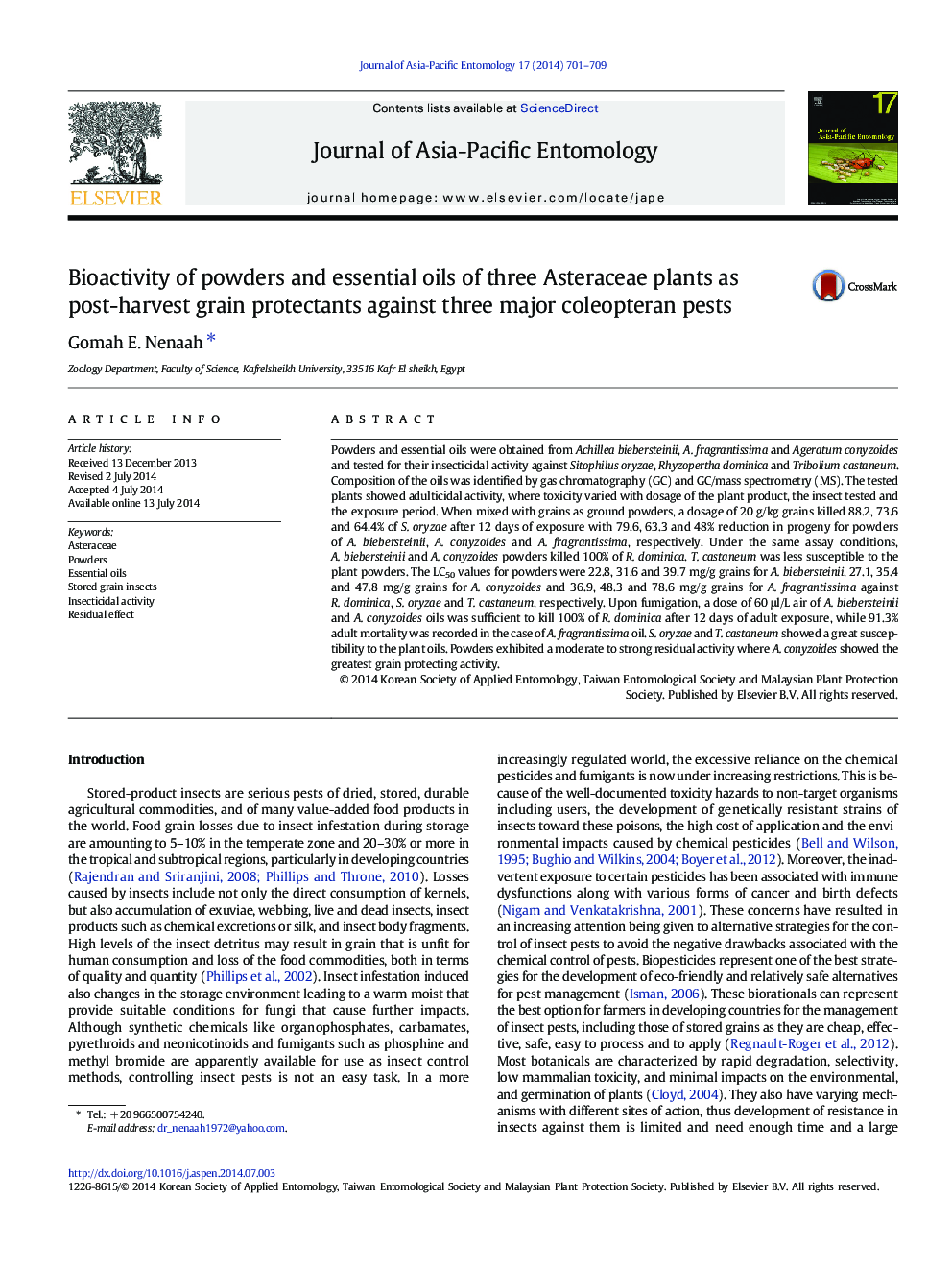| Article ID | Journal | Published Year | Pages | File Type |
|---|---|---|---|---|
| 4524543 | Journal of Asia-Pacific Entomology | 2014 | 9 Pages |
•Powders and essential oils were obtained from three Egyptian plants of Asteraceae.•The plants are Ageratum conyzoides, Achillea biebersteinii and A. fragrantissima.•The oils were analyzed using gas chromatography (GC) and (GC)/mass spectrometry.•They showed contact, fumigant and residual toxicity against 3 stored-grain insects.•The order of susceptibility of insects was R. dominica > S. oryzae > T. castaneum.
Powders and essential oils were obtained from Achillea biebersteinii, A. fragrantissima and Ageratum conyzoides and tested for their insecticidal activity against Sitophilus oryzae, Rhyzopertha dominica and Tribolium castaneum. Composition of the oils was identified by gas chromatography (GC) and GC/mass spectrometry (MS). The tested plants showed adulticidal activity, where toxicity varied with dosage of the plant product, the insect tested and the exposure period. When mixed with grains as ground powders, a dosage of 20 g/kg grains killed 88.2, 73.6 and 64.4% of S. oryzae after 12 days of exposure with 79.6, 63.3 and 48% reduction in progeny for powders of A. biebersteinii, A. conyzoides and A. fragrantissima, respectively. Under the same assay conditions, A. biebersteinii and A. conyzoides powders killed 100% of R. dominica. T. castaneum was less susceptible to the plant powders. The LC50 values for powders were 22.8, 31.6 and 39.7 mg/g grains for A. biebersteinii, 27.1, 35.4 and 47.8 mg/g grains for A. conyzoides and 36.9, 48.3 and 78.6 mg/g grains for A. fragrantissima against R. dominica, S. oryzae and T. castaneum, respectively. Upon fumigation, a dose of 60 μl/L air of A. biebersteinii and A. conyzoides oils was sufficient to kill 100% of R. dominica after 12 days of adult exposure, while 91.3% adult mortality was recorded in the case of A. fragrantissima oil. S. oryzae and T. castaneum showed a great susceptibility to the plant oils. Powders exhibited a moderate to strong residual activity where A. conyzoides showed the greatest grain protecting activity.
Graphical abstractFigure optionsDownload full-size imageDownload as PowerPoint slide
